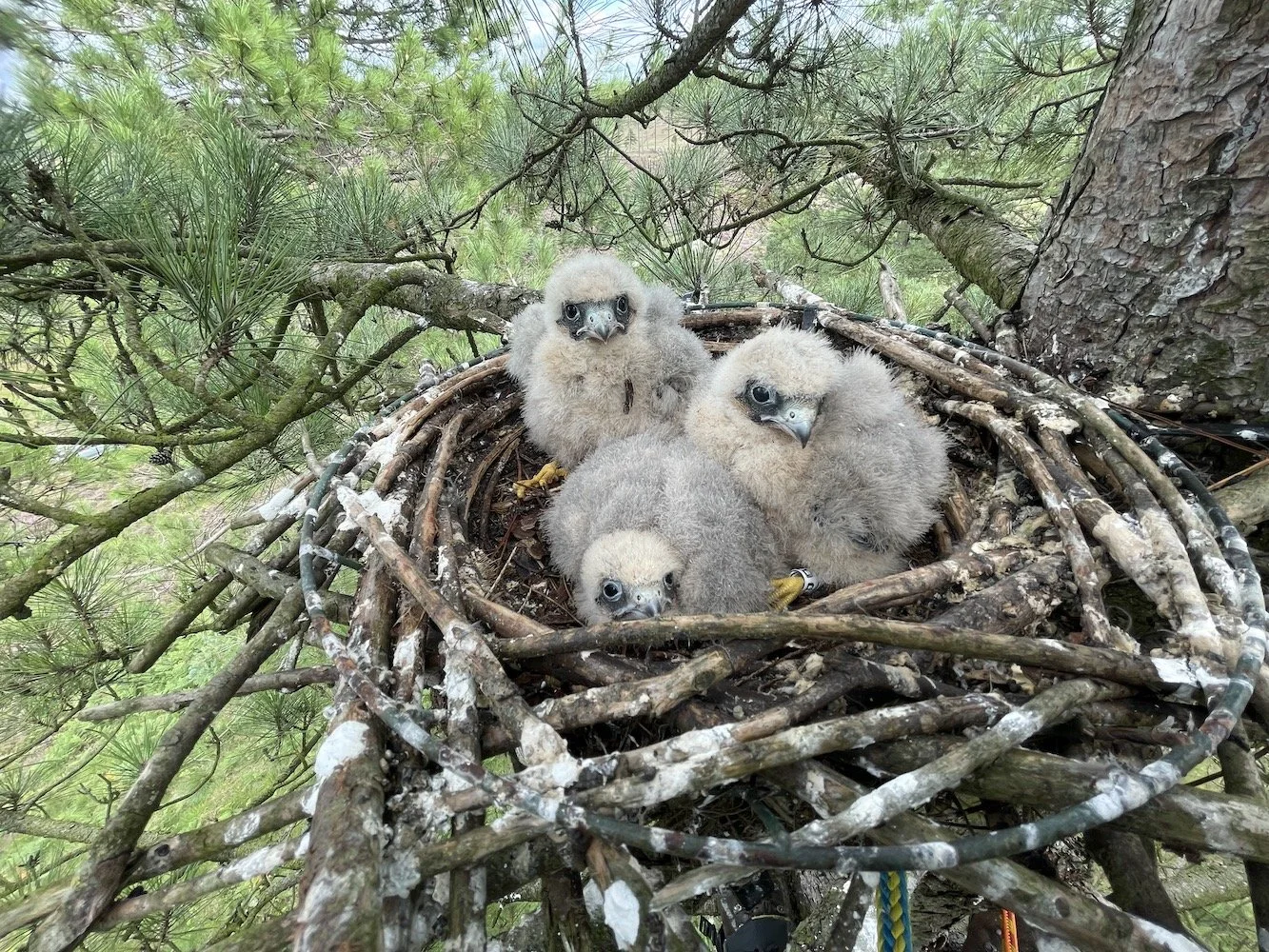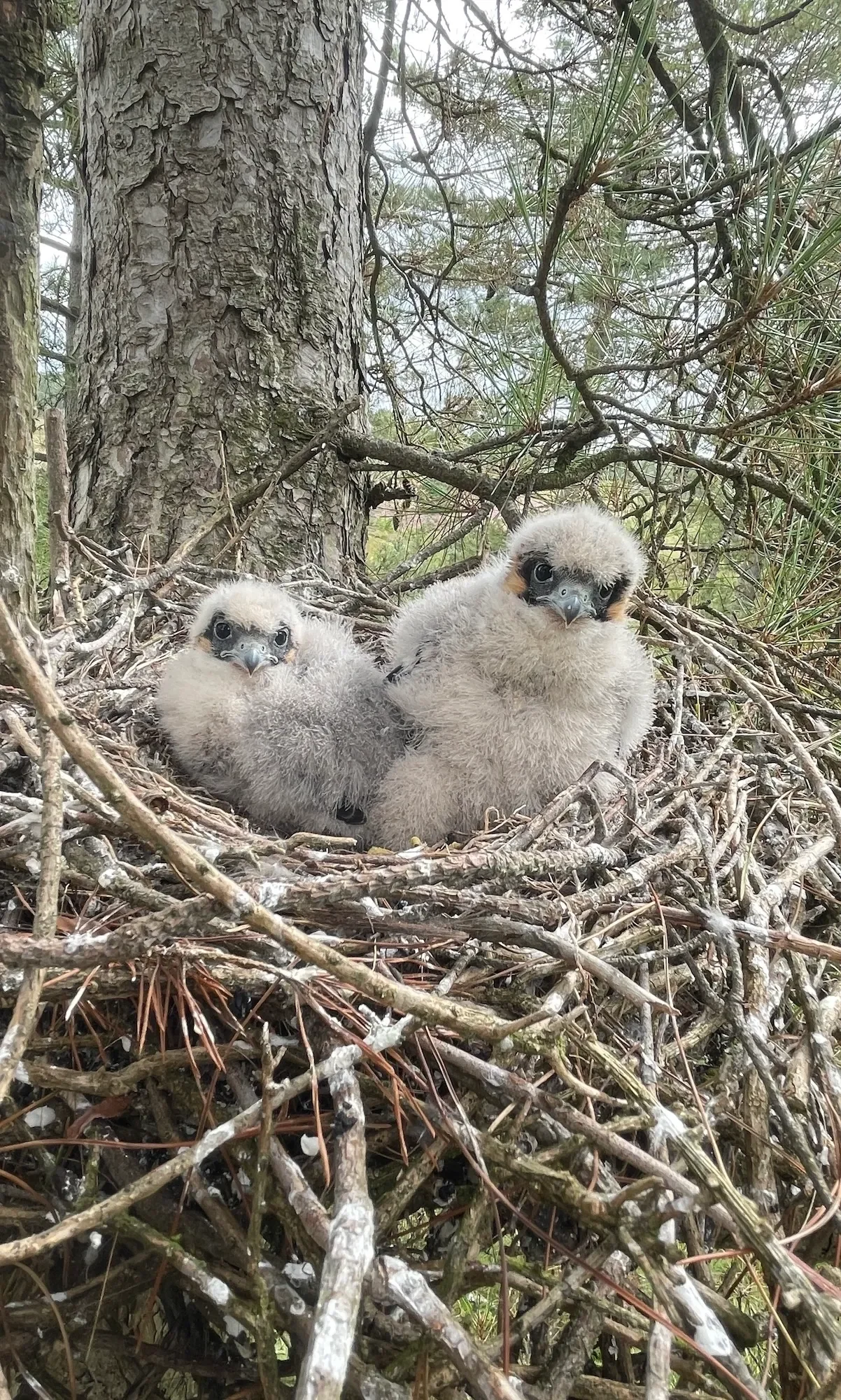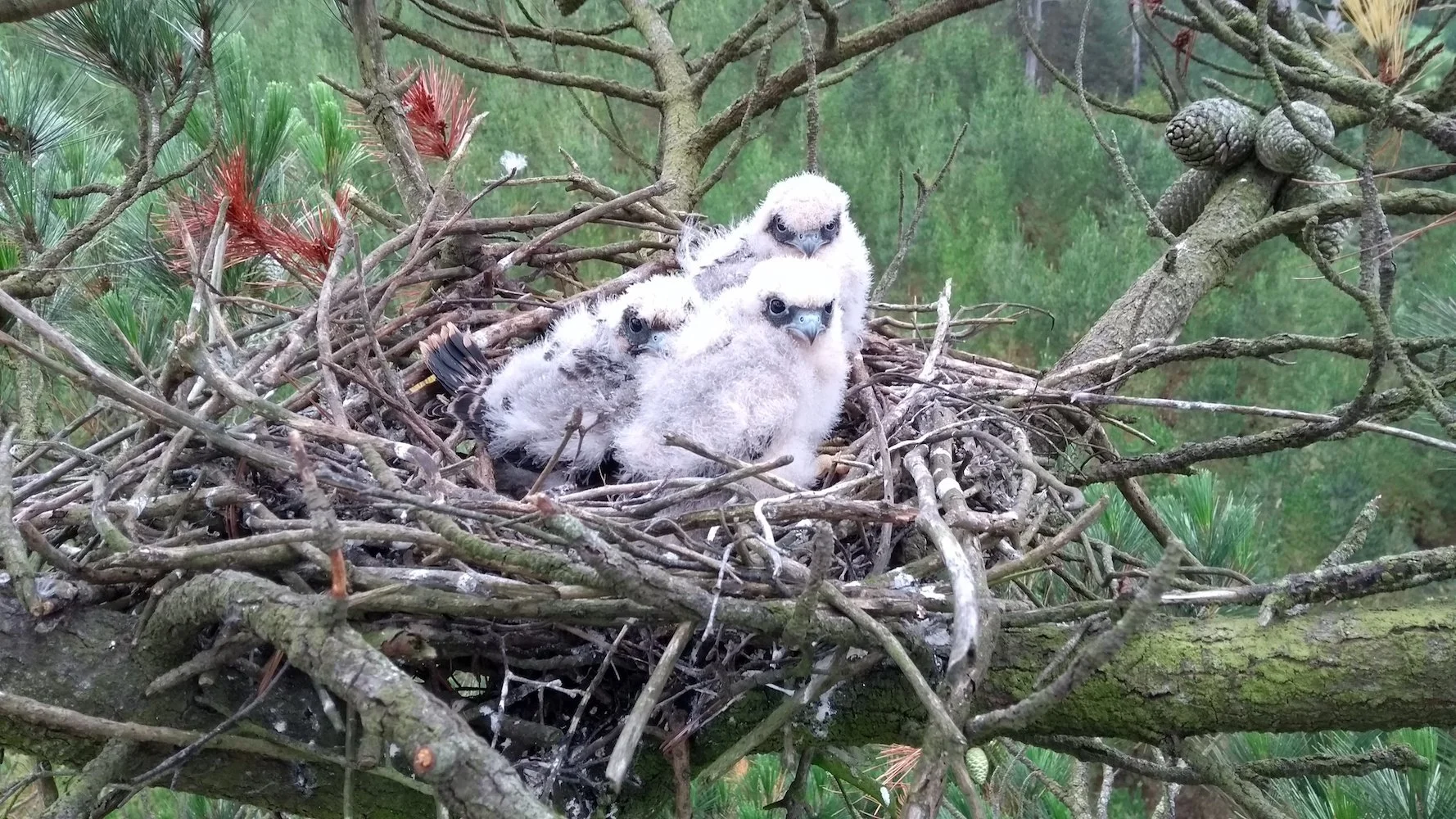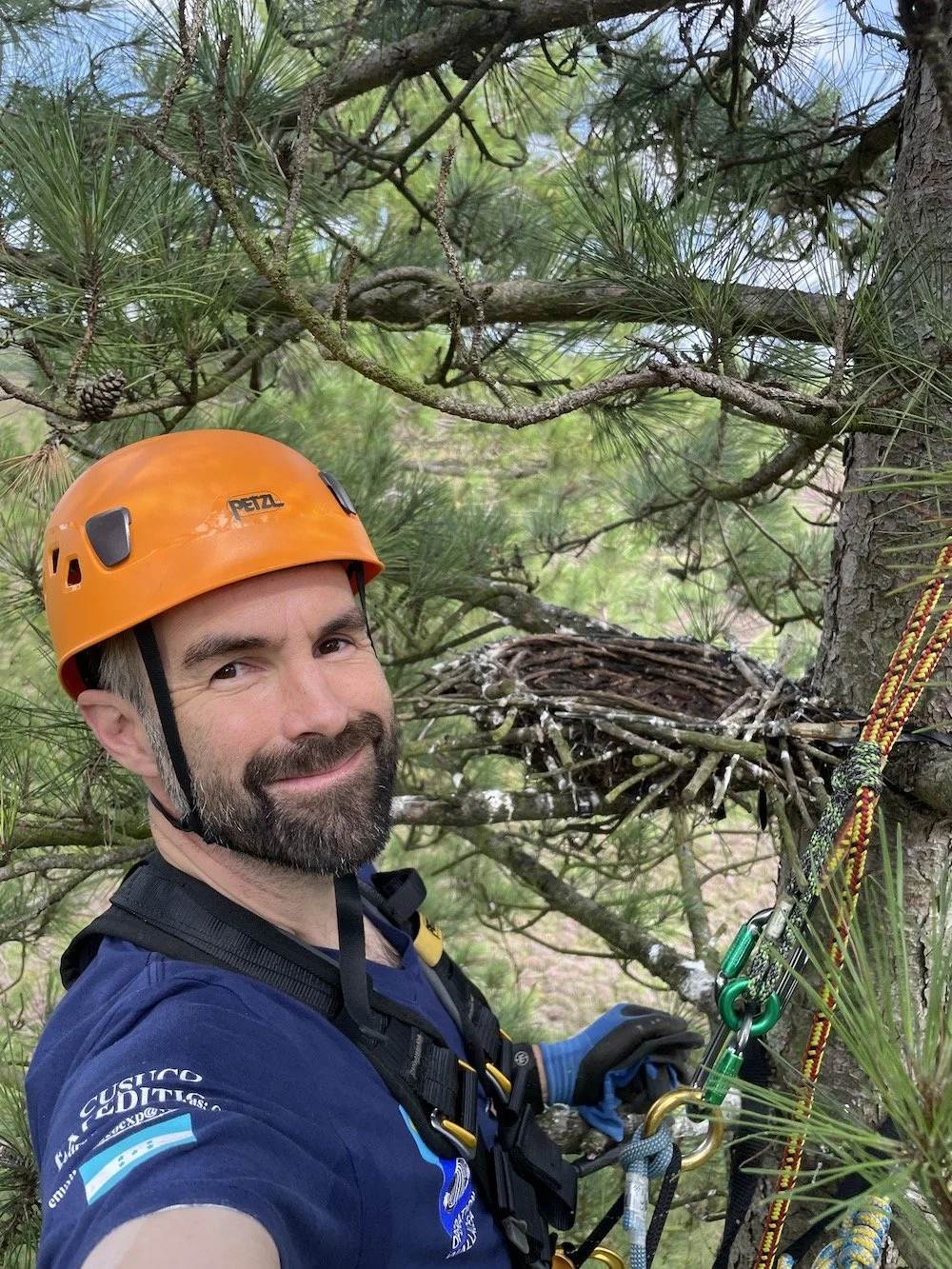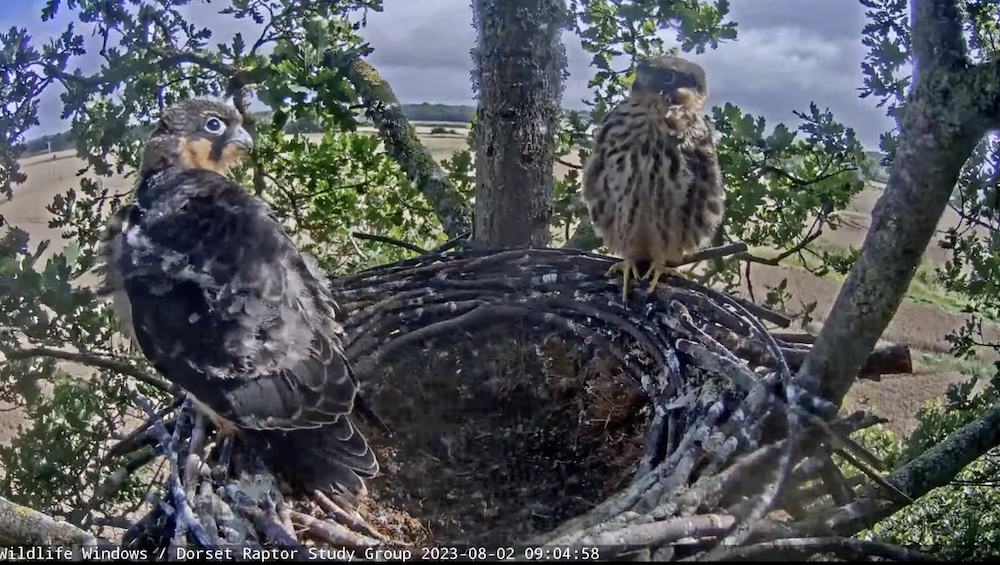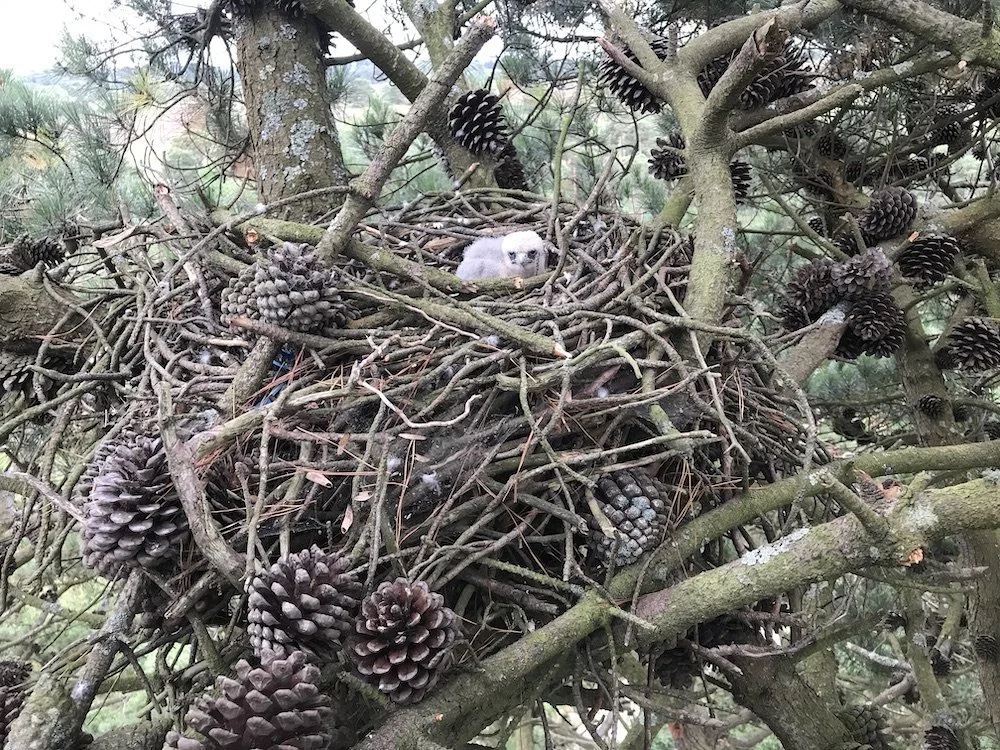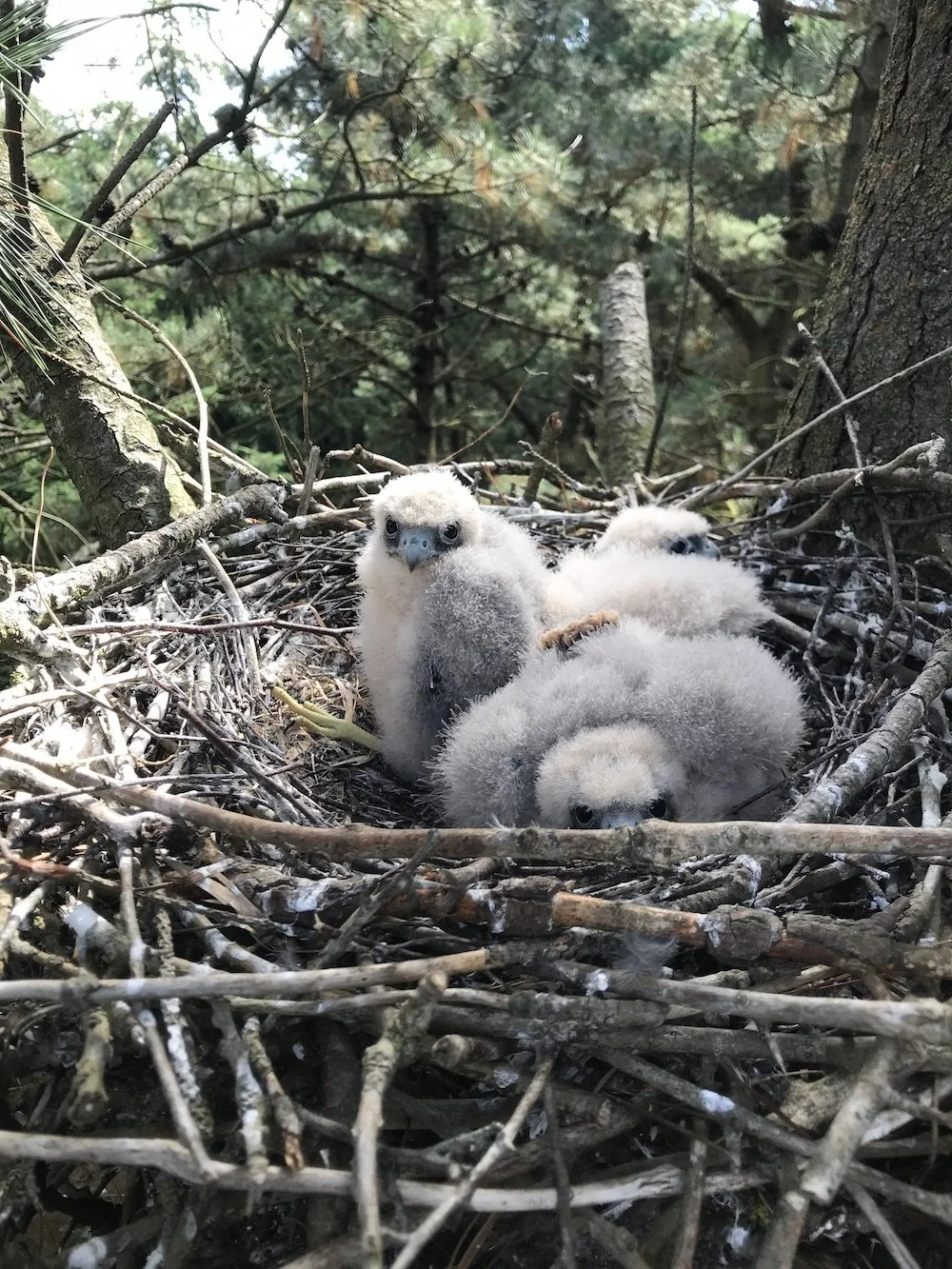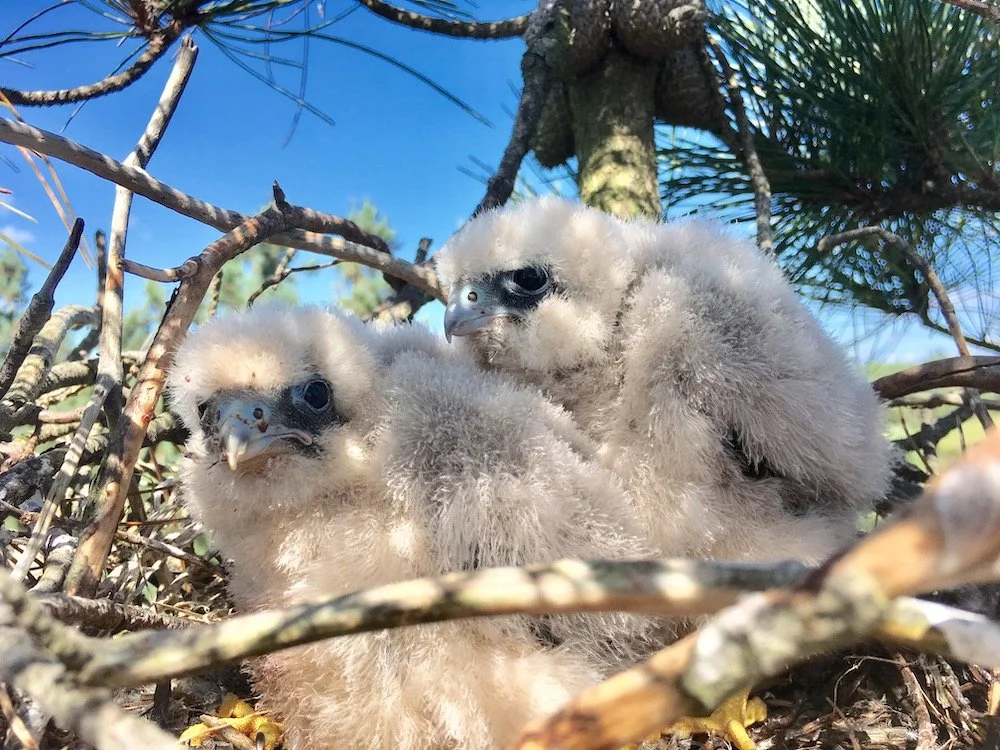The lowdown on Hobby nests
Why has the hobby got a man-made nest? Do they not build their own? Read on for all the answers!
2024 Hobby chicks in an artificial nest
Many of you have been asking all kinds of interesting questions about the stars of this years live Hobby nest camera. So for all those who've been asking via our website, the Live-Stream live chat and on Blueksy socials, here's the lowdown on Hobby nests, their choices of the place they to raise their chicks, and why on the live-stream they are using an artificial nest.
Like all falcons, Hobby do not build a nest, choosing instead a ready made structure in which to lay their eggs. Arriving in the UK each summer to breed, they begin courtship and pair bonding behaviour which includes choosing a nest site. Usually this is a nice, this-year's crow's nest though they will also happily go for vacant nests of other species such as raven, buzzard, heron or sometimes even a squirrel's drey.
Hobby chicks in a crow’s nest
Returning pairs of Hobby will use the very same nest again the following year and we've had them return for several years in a row. Whatever aspects that exact spot in a landscape has, it seems to ticks all the boxes for rearing their young. But all too often, long after the birds have flown south for the winter, these stick nests fall apart, tossed down in winter storms. And the many squirrels will heap great mounds of grass on top of them for their drey, making them unsuitable for the falcons.
Of course, every year all the local crows built nice new nests. Returning Hobbies will scour the local area before settling on one that suits them, sometimes having to wait for the crows to first fledge their young! However, this new spot may be up to 4km kilometres away. In a complex woodland and heath mosaic this can make monitoring such these scarce and secretive falcons nearly impossible. Lucky we have a solution that helps both us and the birds.
Hobby chicks in an open crow’s nest
Our solution is simple - we gift the birds a replacement nest back in the exact same spot in the very same tree. These artificial nests are specialised, the crafting of which takes some time. We use natural materials on a substructure (a hanging basket!) to replicate the particular features of a crow nest including the size, form and materials. And we have found that Hobbies really like them. So when the birds come back, there it is, all ready for go.
A great function of these artificial nests is that it facilitates monitoring with minimal interference. It both helps us know where to look and helps the birds maintain their ideal point in the landscape. This is particularly relevant where they are nesting in areas under constant land management such as commercial forestry, where tree planting and felling is part of the mix. In placing our special nest baskets in particular places this avoids any unexpected conflict, ensuring a smooth breeding season for the birds.
Visiting an artificial nest for bird ringing
As part of our monitoring and research under a whole ream of licences, we ring and colour-ring all the young hobby chicks before they take to the skies. This allows us to gather fantastic data on brood size, productivity, breeding success and sex ratios. Their unique colour rings are easily spotted and recorded by observers, photographers and scientists, like this great image by photographer Mark Wright.
The monitoring work involves long hours in the field, lots biting insects and climbing trees. Working at height in trees involves managed risk and a thorough knowledge of the individual trees involved, such as where we have installed the nest baskets, also allows us to keep our climbers extra safe and our H&S team happy.
Hobby chicks near to fledging in an artificial nest
See below for more great examples of natural nests including a big old raven nest. Feel free to ask more questions and thanks for reading!
Single Hobby chick in a raven nest
Hobby chick in a squirrels drey
Hobby chicks in a crow nest in a forest clearing
Two young Hobby chicks in a crow nest at the very tip of a pine tree

